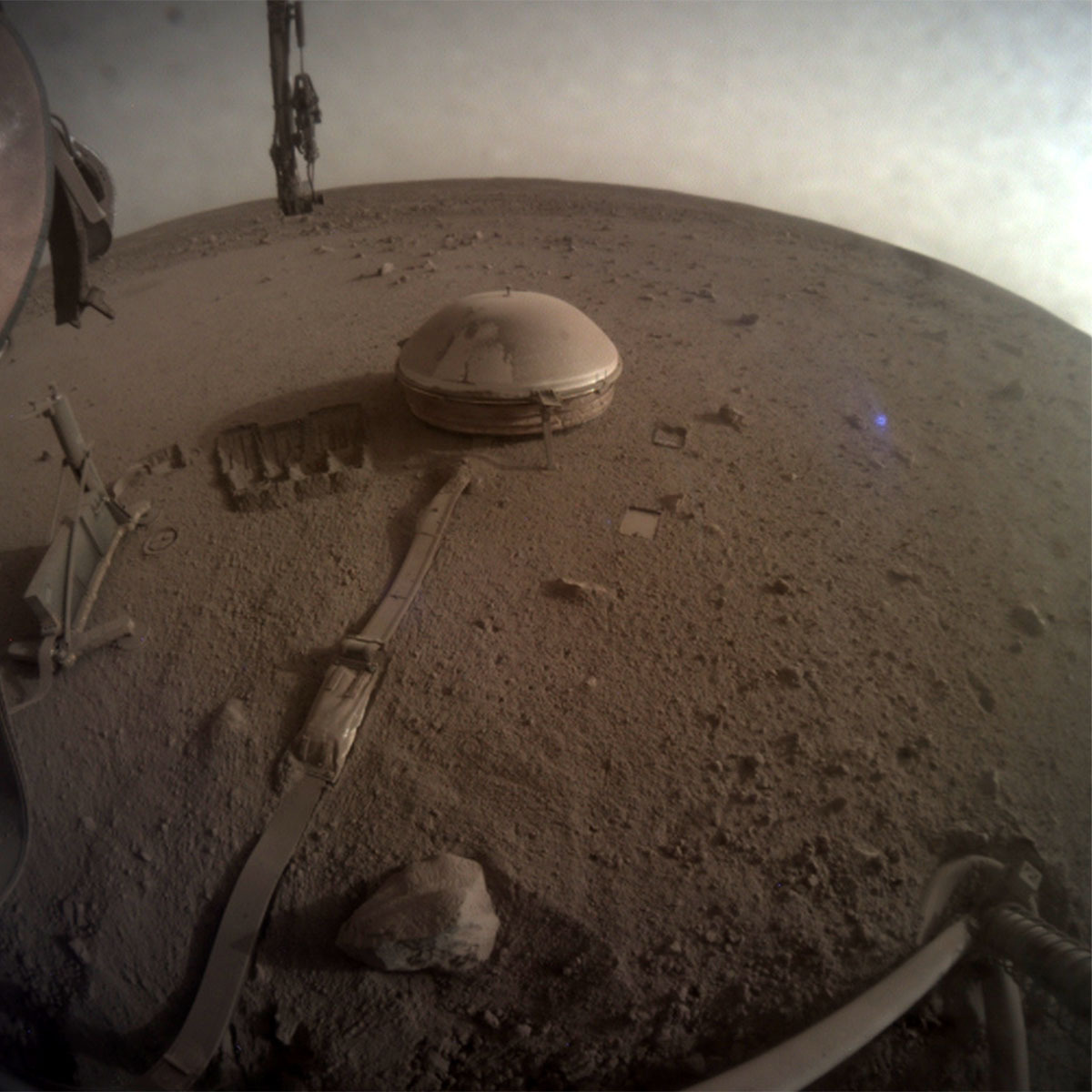28.12.2022
‘It’s hard to say goodbye.’ Quake-sensing lander dies on Mars

On 11 December, NASA’s InSight lander sent this picture of its dust-covered seismometer—one of the last pictures taken by the mission.NASA/JPL-CALTECH
And another one bites the dust. The end has come for NASA’s InSight mission, a Mars lander that for more than 4 years listened for ground shaking that illuminates the structure of the planet’s interior, the agency announced yesterday.
The lander last communicated with Earth on 15 December. NASA could not reach it in two follow-up attempts, leading the agency to conclude its batteries had run out of energy and its dust-covered solar panels could no longer deliver power.
“We’ve thought of InSight as our friend and colleague on Mars for the past 4 years, so it’s hard to say goodbye,” Bruce Banerdt, the mission’s principal investigator at NASA’s Jet Propulsion Laboratory, said in a statement. “But it has earned its richly deserved retirement.”
The $830 million mission relies on seismic waves from small marsquakes, which bounce around boundaries deep inside the planet before being picked up by a seismometer, one of two instruments on the lander. Researchers use differences in the arrival times of these waves to construct a picture of the planet’s interior. The team found Mars has a surprisingly thin crust, a cool mantle, and a large core that still had a molten outer layer.
Not all went well. The lander’s second instrument, a heat probe, was never able to burrow itself into the clumpy soil. But in the end, the lander detected 1319 marsquakes, including tremors caused by known asteroid impacts. In May, it caught its biggest marsquake, a 4.7 magnitude temblor that rattled the crust for 10 hours.
Soon after that quake, giant for Mars, the mission began to prepare for the end, shutting down different parts of the lander in order to conserve battery power and keep the seismometer on as long as possible. In May, Banerdt said he was pleased with what the lander accomplished. “We now have a map of the inside of Mars.”
Quelle: AAAS
